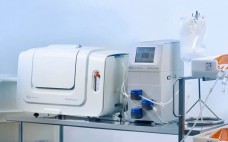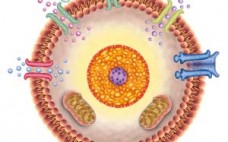Quality-critical attributes particular to liposome drug products include physicochemical properties such as particle size distribution and morphology, e.g. their overall shape. Such properties will influence the biological activity and bio-distribution of liposomal-based drug and gene delivery platforms. Analytical techniques that provide objective and reliable information on liposome particle characteristics can thus help to improve product development processes and shorten the time to securing their final quality. Cryo-transmission electron microscopy (cryoTEM) combined with image analysis using proprietary Vironova Analyzing Software (VAS)…
Upstream
CHO Cell Cultivation in the Allegroâ„¢ XRS 20 Bioreactor System with Working Volumes from 2 to 25 L
The Allegroâ„¢ XRS 20 bioreactor system is a single-use bioreactor technology designed for applications ranging from general life sciences research to seed train operations, and as a final stage reactor for small scale commercial production. In practice, many installed systems have been implemented into seed train and small scale GMP production operations, where operational simplicity and consistent results are key benefits for industrial users. In the application note summarized here, we report efforts to enhance the capabilities of the…
Future Immunoassay Approaches in Modern Bioprocess Development
Modern bioprocess development requires accurate, high throughput analytical methods to match scaled-down, high-throughput screening, the application of DoE, and science-based decision making consistent with QbD. Gyrolabâ„¢ systems and Gyros’ immunoassay kits constitute a proven platform that supports these needs today and has the capability to meet future challenges. The assay principle uses high-capacity, flow-through affinity columns embedded within a CD. Centrifugal force, capillary action and hydrophobic barriers are exploited during parallel processing of up to 112 samples on each CD.…
Applying Single-Use Efficiencies to Room-to-Room Fluid Transfer
Biopharma manufacturers need to transfer critical fluids from cleanroom to cleanroom quickly, aseptically, and with minimal effort and expense for maximum productivity. Traditional hard piping involves intensive cleaning operations and down time between uses. Portable tanks run the risk of damage and leaks and also present cleaning challenges. Incorporating Single-Use components and practices with in-wall transfer systems can help speed and streamline operations while maintaining isolated environments. These types of systems help remove the risk of breakage, spillage and lost…
Development and Optimization of CHOgro® Transient Expression Technologies for High Titer Antibody Production in Suspension CHO Cells
During early stage drug development, quickly obtaining relevant candidate proteins through transient transfection can accelerate drug discovery. High titers are often obtained from Human Embryonic Kidney (HEK) 293 derived cell types; however, the use of different host cells between early stage transient and later stable protein production is a concern and can lead to the advancement of false-positive candidates. Chinese hamster ovary (CHO) cells are a desirable target cell type due to growth characteristics and a history of regulatory approval;…
How Molded Manifold Assemblies Prevent Leaks & Costly Consequences
Molded tubing manifolds have roles to perform over and above being a transport vehicle for liquids. The assemblies must maintain leak-proof flow. They need to meet sterility requirements and help limit the need for cleaning and associated validations. They also must be cost effective, simple to use and efficient. When compared with hand-assembled tubing sets, the advantages of molded tubing manifold assemblies are clear. Tubing sets made from multiple components present a risk of leaks at every juncture. With barbed…
Development of a Novel Cold-Chain Tubing, FP-FLEX™, and Single-Use Freezing Bag: For Working Cell Banks Enabling Closed-System Processing to Temperatures As Low As –196 °C
Working cell banks (WCBs) are commonly applied to initiate cell culture manufacturing campaigns to produce therapeutic proteins. Those campaigns typically begin with the inoculation of cells previously cryopreserved in vials. Although vials are typically used to establish WCBs and initiate manufacturing campaigns, they are not optimal for the growing demands of commercial production.
New Device for Biomass Monitoring in Shake Flask Culture
We developed a novel system for online biomass measurement in shake flasks based on near 360° scattered light detection. The optosensoric components were combined with the established PreSens SFR Shake Flask Reader technology, so biomass, pO2 and pH can be monitored non-invasively through the flask bottom. First application of the prototype SFR vario on Escherichia coli K12 and Kluyveromyces marxianus culture resulted in highly reproducible online biomass data, with relative errors matching those of standard offline OD measurements.
Three Steps to Start You on the Path to Obtaining the Best Recombinant CHO Cell Line
When developing efficient, high quality biomanufacturing processes, it is imperative that the expression system (‘host cell line’ and ‘vector’) and the process to isolate and identify the best clonal cell line (‘clonal cell line development process’) are of the highest quality. At FUJIFILM Diosynth Biotechnologies a team of scientists has invested more than 20 FTE years undertaking innovation work which has culminated in the development of a new host cell line and vector, along with an optimised clonal cell line…
Flow Electroporation Capabilities and Case Studies: Rapid GPCR Screening and Functional Ion Channel Assays
MaxCyte’s proprietary flow electroporation technology has been successfully applied in ex vivo cell therapy (1) and drug discovery pipelines where reproducibility, efficiency and the need for increased cell numbers are critical. This technical paper discusses the merits of transient transfection using flow electroporation versus other recombinant expression approaches and its application in hit identification and lead optimization programs. Data are presented demonstrating the key features of the MaxCyte® STXâ„¢ Scalable Transfection System, including broad applicability, scalability, and the production of…










